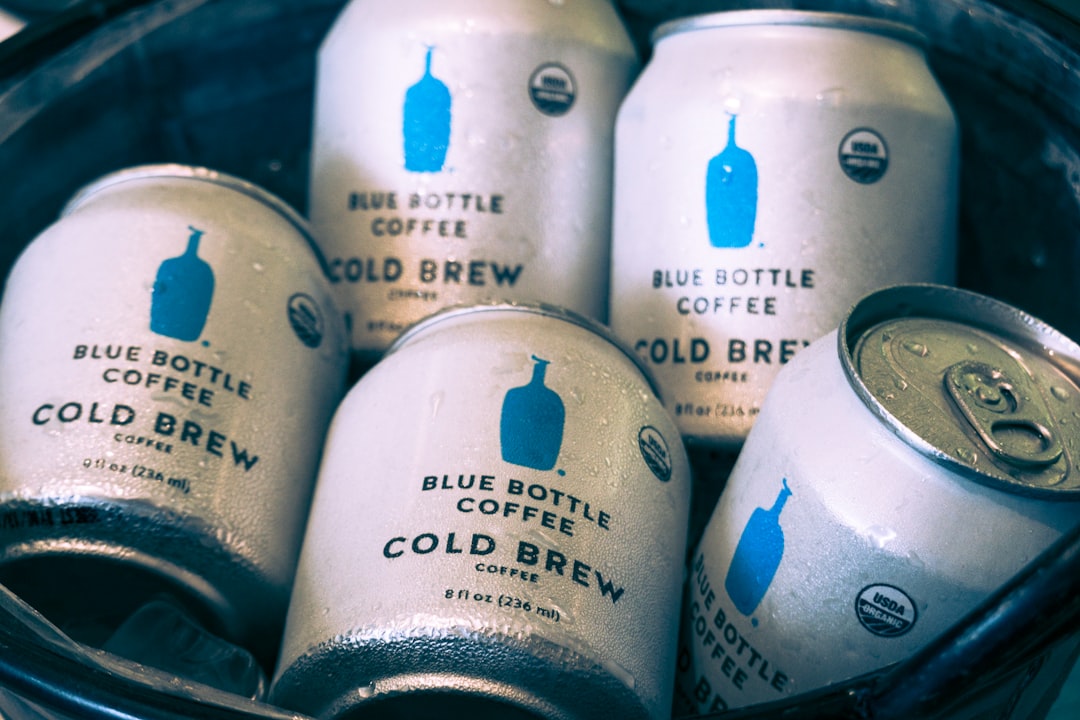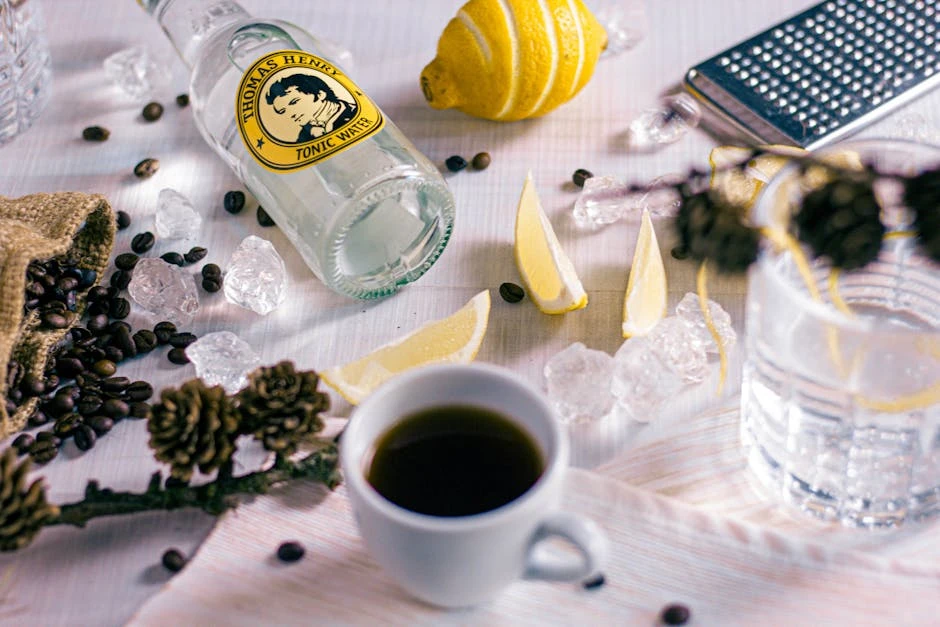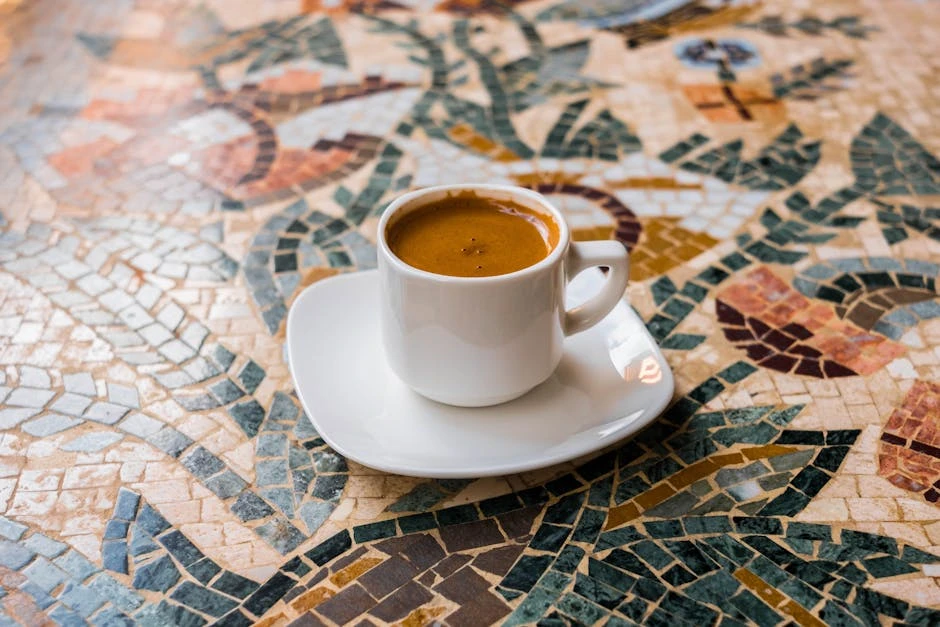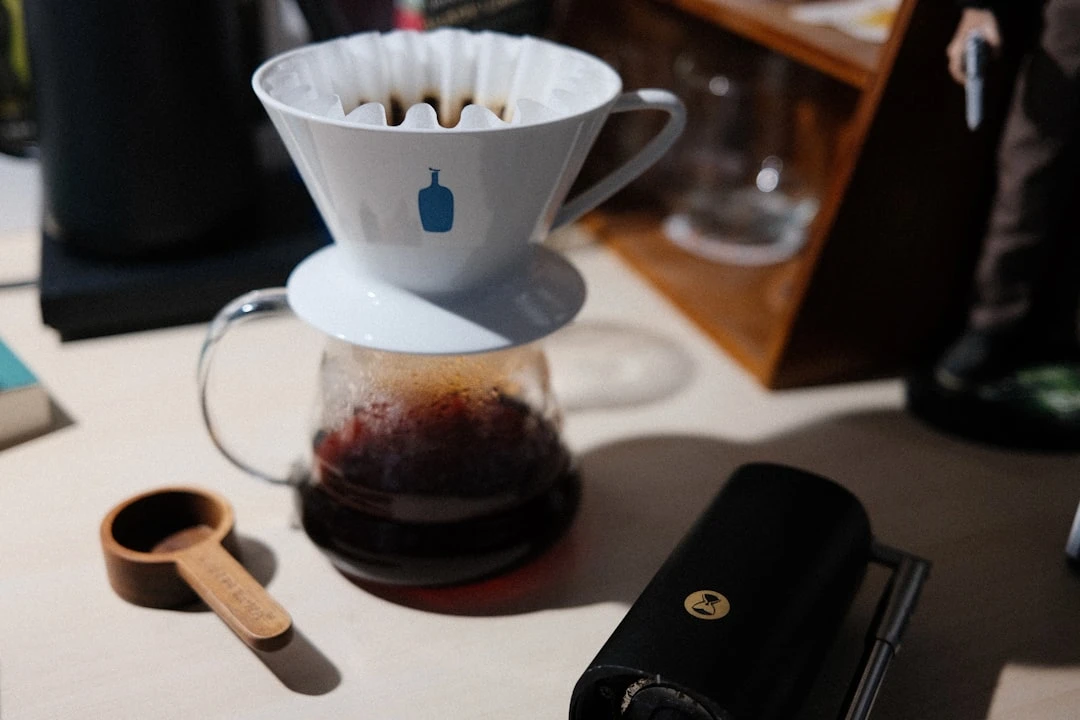Third Wave Coffee RTD: How Specialty Roasters Revolutionized Ready-to-Drink Coffee in 2025

Did you know that 73% of coffee consumers now prioritize quality over convenience when choosing ready-to-drink options? I've been tracking the specialty coffee movement for over a decade, and nothing has surprised me more than watching artisan roasters completely flip the RTD game on its head!
When I first heard that Blue Bottle was launching canned cold brew back in 2015, I honestly thought it was a sellout move. Boy, was I wrong. What started as a few pioneering brands has exploded into a full-blown revolution where your favorite neighborhood coffee shop's beans are now available in grab-and-go format.
In this deep dive, I'll walk you through how third wave coffee philosophy transformed the ready-to-drink industry, which specialty roasters are crushing it in the RTD space, and why this movement matters for every coffee lover who's ever been stuck choosing between quality and convenience.
What Is Third Wave Coffee and Why It Changed Everything
Let me paint you a picture of how dramatically coffee culture has shifted. First wave coffee was all about convenience - think Folgers and instant coffee that prioritized caffeine delivery over taste. Second wave brought us Starbucks and the coffeehouse experience, introducing espresso drinks and creating coffee as a social ritual.
But third wave coffee? That's where things got really interesting.
Third wave coffee treats coffee like wine or craft beer - as an artisanal product where origin, processing method, and brewing technique all matter tremendously. I remember visiting my first third wave coffee shop in Portland back in 2008, watching a barista spend five minutes explaining the tasting notes of a single-origin Ethiopian bean like they were sommelier at a fancy restaurant.
At first, I thought it was pretentious nonsense. Then I tasted the coffee, and everything clicked.
The core principles of third wave coffee include sourcing beans directly from specific farms (not just regions), lighter roasting to preserve origin flavors, precise brewing methods, and treating coffee preparation as a craft rather than just a caffeine delivery system. When these specialty roasters started moving into RTD formats, they brought these same obsessive quality standards with them.
What makes this so revolutionary is that traditionally, ready-to-drink coffee was the antithesis of everything third wave stood for. RTD products used commodity-grade beans, focused on shelf stability over flavor, and prioritized cost-cutting over quality. Third wave RTD coffee basically said "screw that approach" and proved you could maintain artisan standards even in mass-produced formats.
The shift has been remarkable to witness. Premium RTD brands now feature single-origin beans, specific roast dates, detailed flavor profiles, and brewing methods that would make any craft coffee enthusiast proud. It's like watching the craft beer movement all over again, but with cold brew cans instead of IPAs.
The Evolution of Specialty Roasters Entering RTD Markets
The timeline of third wave coffee brands entering RTD markets reads like a master class in strategic business evolution. Blue Bottle Coffee was really the pioneer here, launching their bottled cold brew in 2015 after years of resistance to anything that smacked of mass production.
I actually interviewed one of their production managers back in 2016, and she told me the biggest challenge wasn't the brewing - it was maintaining their obsessive quality standards while producing thousands of bottles daily instead of dozens of cups. They literally had to invent new quality control processes because traditional RTD production methods would destroy the delicate flavor profiles they'd spent years perfecting.
Stumptown followed in 2017 with their nitro cold brew cans, and that's when I knew this wasn't just a trend. Stumptown had built their entire brand reputation on being uncompromisingly artisan, so their move into RTD signaled that specialty roasters had figured out how to scale without selling their souls.
The real explosion happened between 2018-2020. Intelligentsia launched their black coffee RTD line, Counter Culture introduced their sustainable RTD options, and La Colombe went completely nuts with innovation - draft lattes in cans that actually foamed when you opened them. I mean, who thinks of stuff like that?
What's fascinating is how each brand approached the challenge differently. Some focused on replicating their flagship café drinks, others developed RTD-specific blends, and a few went completely experimental with flavors and formats they'd never offer in their shops.
The technology advances during this period were crucial too. Better nitrogen infusion systems, improved packaging that preserved coffee oils, and cold-chain distribution networks that maintained quality from roastery to consumer. Without these innovations, third wave RTD would've been impossible.
By 2022, it wasn't unusual to find six different specialty RTD brands in a single grocery store cooler. The movement had officially gone mainstream while somehow maintaining its craft credibility.
Leading Third Wave Coffee Brands Dominating RTD
Let me break down the heavy hitters in the third wave RTD space, because each brand brings something unique to the table.
Blue Bottle Coffee remains the gold standard for premium RTD execution. Their New Orleans iced coffee is basically liquid perfection - smooth, complex, with just enough sweetness to highlight the coffee rather than mask it. What impresses me most is their consistency; I've bought their RTD products in California, New York, and Texas, and they taste identical every single time.
Stumptown Coffee went all-in on nitro technology, and honestly, they nailed it. Their nitro cold brew has this creamy mouthfeel that's almost supernatural - no dairy, but it drinks like there's cream in it. I've served it to friends who swear they don't like black coffee, and they always ask for seconds.
La Colombe is the innovation king of this space. Their draft lattes literally foam when you open the can - not a gimmick, but actual functional foam that enhances the drinking experience. I was skeptical until I tried one, and now I keep a four-pack in my fridge for weekend mornings when I'm too lazy to make coffee but still want something special.
Intelligentsia brings their direct-trade philosophy to RTD with single-origin cold brews that actually taste like the specific farms they source from. Their Ethiopian offering has these bright, fruity notes that are completely different from their Brazilian option. It's like having a cupping session in convenient packaging.
Verve Coffee Roasters represents the California craft coffee aesthetic perfectly - laid-back but serious about quality. Their RTD line feels like summer in a can, with clean flavors and packaging that looks great on your Instagram story.
The regional players are worth mentioning too. Groundwork Coffee from Los Angeles, George Howell Coffee from Boston, and Ritual Coffee from San Francisco all produce RTD products that rival the national brands. Sometimes the local options are even better because they're not trying to appeal to every palate across the country.
What's interesting is how these brands have maintained their distinct personalities in RTD format. You can still taste the Blue Bottle house style, the Stumptown approach to roasting, and La Colombe's innovative spirit even though they're all working within the constraints of shelf-stable packaging.
What Makes Third Wave RTD Coffee Different from Mass Market
The difference between third wave RTD and mass market options is like comparing craft whiskey to bottom-shelf vodka - they're technically the same category, but that's where the similarities end.
Bean sourcing is the foundation of everything. Mass market RTD uses commodity coffee - basically whatever's cheapest and available in huge quantities. Third wave brands source specific lots from individual farms, often paying two to three times market price for beans that meet their quality standards.
I did a blind taste test with my coffee club last year, comparing Starbucks RTD cold brew with Blue Bottle's equivalent. The difference was shocking even to people who claimed they couldn't tell good coffee from bad. The Starbucks version was flat, bitter, and one-dimensional. The Blue Bottle had layers of flavor - chocolate notes, subtle fruit undertones, and a clean finish that didn't leave you reaching for water.
The roasting profiles are completely different too. Mass market RTD typically uses dark roasted beans because they're more forgiving in large-scale production and have stronger flavors that survive processing. Third wave brands often use lighter roasts that preserve origin characteristics and require much more precise handling to maintain quality.
Brewing techniques separate amateur from professional. Industrial RTD production focuses on speed and efficiency - get the caffeine out of the beans as quickly as possible. Third wave brands use slower extraction methods, often cold brewing for 12-24 hours to develop complex flavors without extracting bitter compounds.
The price difference reflects these quality investments. You'll pay $2-3 for mass market RTD and $4-6 for third wave options. Some people balk at that premium, but when you break down the cost per ounce and factor in the quality difference, it's actually reasonable value for what you're getting.
Packaging innovations also set third wave brands apart. Better barrier materials that prevent flavor degradation, nitrogen flushing to maintain freshness, and can designs that optimize the drinking experience rather than just grabbing shelf attention.
The Business Strategy Behind Third Wave RTD Success
The business logic behind third wave roasters entering RTD markets is actually pretty brilliant when you break it down. Most specialty coffee shops have limited geographic reach - even successful multi-location brands rarely expand beyond their regional markets because maintaining quality across distance is so challenging.
RTD products solve the geographic limitation problem completely. A roaster in Portland can now sell their coffee to customers in Miami without opening a single new café. The unit economics work differently too - instead of needing baristas, rent, and all the overhead of physical locations, RTD requires manufacturing and distribution partnerships but generates ongoing revenue from every sale.
I spoke with a specialty roaster in Denver who told me RTD products now represent 40% of their total revenue, even though they only launched the line three years ago. The margins are different from café sales - lower per unit but much higher volume potential.
Wholesale distribution creates entirely new revenue streams too. Getting placement in Whole Foods or Target exposes specialty brands to customers who might never visit their cafés. Some people discover third wave coffee through RTD products and then become regular café customers, creating a customer acquisition channel that didn't exist before.
The subscription model aspect is huge too. Many third wave RTD brands offer direct-to-consumer subscriptions that create predictable recurring revenue. It's like having regular café customers who never take up table space or require barista labor.
Competition with established RTD giants like Starbucks isn't really head-to-head because the target customers are different. Third wave brands aren't trying to compete on price or convenience - they're competing on quality and experience for customers willing to pay premium prices.
The retail partnership strategies vary significantly between brands. Some focus on natural and premium grocery chains, others target convenience stores in affluent areas, and a few have exclusive relationships with specific retailers. The key is matching brand positioning with the right retail environment.
Quality Control Challenges in Third Wave RTD Production
Maintaining third wave quality standards in mass production is honestly a nightmare that most people don't appreciate. When you're brewing coffee one cup at a time, you can adjust variables constantly - grind size, water temperature, brewing time. In RTD production, you're making thousands of units with the same parameters, and any deviation ruins entire batches.
I visited a specialty RTD production facility last year, and the quality control setup was more sophisticated than some pharmaceutical plants I've seen. They test every batch for pH, total dissolved solids, extraction percentage, and sensory characteristics. One batch failed because the grind size was 2% coarser than specification - that's an incredibly small variation that most people would never notice, but it affected the extraction enough to fail their quality standards.
Temperature control during production is absolutely critical. Cold brew extraction happens optimally within a very narrow temperature range, and maintaining that consistency across large-scale production requires specialized equipment and constant monitoring. I watched them discard an entire day's production because the chiller system hiccupped for thirty minutes.
Preserving delicate flavor notes during shelf-stable processing is probably the biggest technical challenge. Traditional pasteurization methods would cook off all the subtle characteristics that make third wave coffee special. Most specialty brands use high-pressure processing or other alternative preservation methods that maintain flavor integrity while ensuring food safety.
Packaging material selection affects flavor more than most people realize. Different can liner materials interact differently with coffee compounds, and some specialty brands spent months testing various options before finding ones that didn't impart off-flavors or strip desirable compounds from the coffee.
The shelf-life balancing act is particularly tricky. Specialty roasters want to minimize processing to preserve coffee character, but retailers demand products with longer shelf life for inventory management. Finding the sweet spot requires extensive testing and often compromise on both sides.
Quality testing protocols at third wave RTD facilities often exceed FDA requirements because brand reputation depends on consistency. They're not just testing for safety - they're testing for the specific flavor profiles that define their brand identity. It's expensive and time-consuming, but absolutely necessary for maintaining credibility with coffee-savvy consumers.
Consumer Response and Market Impact
The consumer response to third wave RTD coffee has been overwhelmingly positive, but in ways that surprised even industry insiders. Sales data from 2020-2025 shows specialty RTD growing at 35% annually while mass market RTD grew only 8% during the same period.
What's really interesting is the demographic breakdown. Initial predictions suggested third wave RTD would only appeal to existing specialty coffee drinkers - essentially café customers buying convenience versions of drinks they already loved. That turned out to be completely wrong.
The biggest growth segment is actually people who rarely visited specialty coffee shops but were willing to pay premium prices for better RTD options. These customers were frustrated with mass market RTD quality but didn't have access to good specialty coffee shops in their areas. Third wave RTD basically created a new customer category.
I conducted informal taste tests with friends and family over the past two years, and the results consistently show people can distinguish third wave RTD from mass market options even when they claim not to be coffee experts. The flavor difference is significant enough that even casual coffee drinkers notice and prefer the specialty options.
Brand loyalty patterns in premium RTD are fascinating too. Unlike mass market RTD where people often buy whatever's on sale, third wave RTD customers tend to stick with specific brands once they find ones they like. It's more like wine or craft beer purchasing behavior than typical consumer packaged goods.
Social media influence on third wave RTD popularity can't be understated. Instagram-worthy packaging combined with genuinely superior products created viral marketing that traditional advertising couldn't have achieved. People share photos of their premium RTD coffee the same way they share photos of craft cocktails or artisan food.
The willingness to pay premium prices exceeded most market research predictions. Consumers regularly pay $5-6 for third wave RTD products that deliver similar caffeine content to $2 mass market options. The value perception is based on experience and quality rather than just functional benefits.
Market research from 2024 shows 68% of third wave RTD customers describe the products as "worth the premium price," and 43% say they've reduced their frequency of coffee shop visits because RTD options now meet their quality expectations for daily consumption.
The Future of Third Wave Coffee in Ready-to-Drink Markets
Looking ahead, the trajectory for third wave RTD coffee is pointing toward even more innovation and market expansion. The technological advances I'm seeing in development labs suggest we're still in the early stages of what's possible in premium RTD production.
New brewing technologies being adapted for RTD production include ultrasonic extraction methods that can pull specific flavor compounds more precisely than traditional brewing, and fermentation techniques borrowed from wine and beer production that create unique flavor profiles impossible to achieve through conventional coffee brewing.
Sustainability initiatives are driving massive innovation in third wave RTD packaging and production. Several brands are testing compostable packaging materials, carbon-neutral shipping methods, and closed-loop production systems that eliminate waste. La Colombe just announced they're piloting refillable RTD containers in select markets - imagine bringing your empty cans back to the store for refills like returning beer bottles.
The predicted market share growth for specialty RTD is aggressive but realistic based on current trends. Industry analysts expect third wave RTD to capture 25% of the total RTD coffee market by 2027, up from just 8% in 2022. That represents billions in revenue shifting from mass market to specialty brands.
Flavor innovation opportunities are expanding beyond traditional coffee boundaries. I've seen prototype RTD products incorporating adaptogenic herbs, nootropic compounds, and even fermented coffee that tastes like kombucha. Some of these experiments will fail spectacularly, but others might define the next generation of premium RTD beverages.
International expansion represents huge growth potential. Third wave RTD brands are just beginning to enter European and Asian markets where coffee culture differs significantly from American preferences. Adapting products for local tastes while maintaining quality standards will be challenging but potentially very rewarding.
The biggest potential challenge I see is maintaining artisan credibility as these brands scale. There's always tension between growth and authenticity in specialty food and beverage categories. Some third wave RTD brands will successfully navigate this balance, others will lose their way and become just another premium mass market product.
Distribution channel evolution will continue favoring direct-to-consumer and premium retail partnerships. I expect to see more third wave RTD brands opening their own retail locations specifically designed around RTD products - essentially convenience stores curated for coffee enthusiasts.
Conclusion
The third wave coffee movement's embrace of ready-to-drink formats proves that convenience doesn't have to mean compromising on quality. What started as specialty roasters reluctantly dipping their toes into RTD has become a full-scale revolution that's raised the bar for the entire industry.
I've watched this transformation unfold firsthand, from those early days of skeptical coffee snobs (myself included) to today's reality where you can grab a single-origin Ethiopian cold brew from a gas station cooler. It's pretty incredible when you think about it!
The key takeaway? Third wave RTD coffee isn't just about fancy packaging or premium pricing – it's about bringing the same obsession with quality, sourcing, and craftsmanship that made specialty coffee shops successful into a format that fits our busy lives.
Whether you're a coffee purist who's been resistant to RTD options or someone looking to upgrade from your usual convenience store grab, I encourage you to try a few third wave RTD brands. Your taste buds will thank you, and you'll be supporting the artisan roasters who refuse to let convenience compromise their craft.


